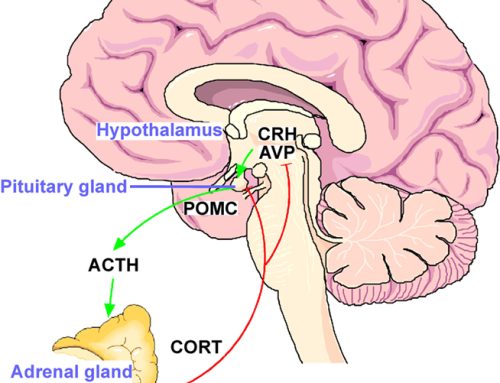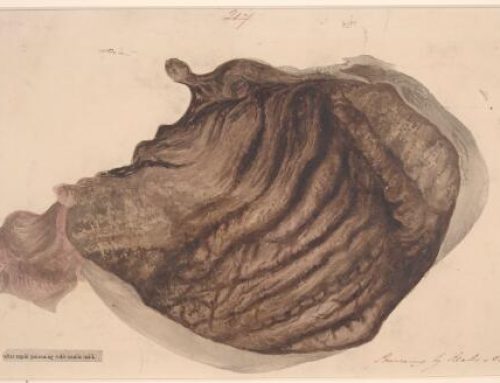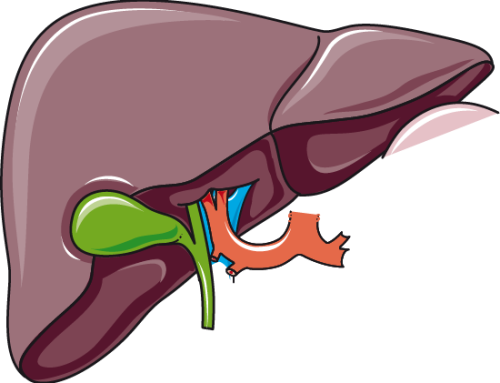THE HPA AXIS DYSFUNCTION PROTOCOL
Time Frame: 3 – 6 months (in hard cases 9 – 12 months)
If you are suffering from out of control stress or burnout, (maybe you read my other post on understanding the HPA axis) you will want to really take a look at your lifestyle to get a handle on this. This is how I address stress disorders in my clinical practice. Focus on lifestyle and picking a few supplements to experiment with but don’t feel pressured to buy all of the supplements. There are many options available and this is best performed under the guidance of a medical doctor or naturopath who’s trained in helping with HPA axis issues.
- Follow the adrenal healing diet.
- Eat lots of brightly colored vegetables, lean clean protein at every meal and healthy fats. There is no limit on vegetable intake. Have protein at each meal including lean meat, poultry, wild seafood, eggs (if you tolerate them). Eat magnesium-rich foods which help support the adrenal glands like dark leafy greens, fatty fish, avocado, and soaked and sprouted nuts and seeds. Also aim to consume anti-inflammatory foods like fish which contain omega-3 fatty acids, turmeric which contains curcumin, and citrus which contains vitamin C.
- Follow the elimination diet if you have any gut or hormone dysfunction. Get rid of foods that you are sensitive to or foods that cause inflammation. Big ones for a lot of people are diary, soy, eggs, and grains.
- Eat enough carbs. A strict no-carb diet can stress the body even more, worsening adrenal burnout. Aim for gluten-free carbs such as fruit, root vegetables or other non-starchy veggies. You may tolerate quinoa, lentils and buckwheat or other ancient grains. If you are having trouble with digestion eliminate these for a month and then reintroduce.
- Remove all processed foods from your diet. That means refined sugars, trans-fats, processed foods, and alcohol. Processed foods are a stressor on the gut microbiome
- Maintain Regular Meal Timing.
- Eat breakfast within one hour of waking.Especially for people who struggle with low cortisol, if you try to fast you can end up with low blood sugar because it’s cortisol’s job to maintain your blood sugar.
- Eat regular meals throughout the day. Skipping meals can put a strain on the adrenals due to drops in blood sugar. Having regular mealtimes is important for regulating your cortisol curve.
- Sit down to eat each meal and eat slowly and chew your food properly. Many stressed people rush their meals and don’t properly digest their food causing more strain on the gut. Don’t eat on-the-go, when you’re stressed, driving, etc.
- Avoid eating heavy meals before bed. This disrupts sleep and contributes to insulin resistance.
- Avoid intermittent fasting. Intermittent fasting is not recommended for individuals with adrenal imbalance because it can create additional stress on the body.
- I recommend using a continuous glucose monitor. If you find that your blood sugar is dropping super low at night you will want to make sure to eat something small before bed and talk to a functional doctor about starting different adrenal support strategies like low dose cortef (see below).
- Focus on hydration. Dehydration is also a hallmark of hypothalamic pituitary adrenal dysfunction because the adrenals not only make cortisol but mineralcorticoids. The most important of which is aldosterone, which helps to maintain the body’s salt and water levels which, regulates blood pressure. Without sufficient aldosterone production, the kidneys lose too much salt and as a result water which can lead to dehydration and low blood pressure. A hallmark of burnout is low blood pressure (e.g. especially when getting up after lying down).
- As soon as you wake up, drink a glass of water along with 1/8 to 1/4 teaspoon of Celtic or Himalayan sea salt. Then, throughout the day, have a pinch of sea salt with each glass of water and also use it to season your food.
- Alternatively, you can take a trace minerals supplement (e.g. fulvic acid, trace minerals solution) to absorb more water into her cells.
- Electrolytes mixes like Nuun, Perfect Keto, etc. can also work.
- Wean off caffeine. This is a tough one but if you are really struggling with burnout, it’s important to eliminate the sources of stress in your life that are taxing the body. Follow the coffee detox protocol that I designed for MUD/WTR (use code DRMOLLY for 20% off!)
- Lifestyle changes to speed healing.
- Use exercise to destress. Avoid high-intensity cardio that will further burn you out. Consider building yoga into your schedule twice a week. Other good exercise options include 30 minutes of walking, tai chi, pilates and calisthenics. Avoid doing too many cross-fit type workouts which can up your cortisol.
- Go outside, get into nature and get some fresh air. Nature which has been shown to help reduce stress in studies on forest bathing and negative ions. Sunlight also offers you vitamin D which is very important for hormone health. Plus being in green space is naturally soothing to the nervous system.
- Regulate your sleep cycle. Getting to bed before 11pm is a must in any stage of adrenal fatigue. Many people get a second cortisol surge after 11pm, which further disrupts sleep patterns. Go to bed by 10pm and try to wake up at the same time every morning. Make sure to expose your eyes to natural light in the morning which will help regulate your internal clocks in your hypothalamus and synchronize your peripheral clocks in your adrenals. This will help reestablish a normal cortisol rhythm. Avoid consuming caffeine after 2pm.
- Build rest into the day. Take two 20-minute rest breaks a day to breathe and relax. These activities stimulate the parasympathetic nervous system, which directly counteracts the stress response.
- Take one day of rest each week. At a minimum you may need 1 day off but most people who are dealing with burnout have to reduce their workload to 9 – 5 and take at least 2 days off to heal. Most people with too much stress are working way too much. It’s super important to give your body the space it needs to heal.
- Connect with yourself and others.
- Change your perspective and de-stress your life. Is your definition of success killing you? In many cases, what you perceive as success is driving you into adrenal overload. If perfectionism is your problem, you may want to work on self-compassion. For some people it’s repressed emotions that cause stress. Rather than resist emotions, it’s important to deal with them as needed with laughter, breathing, and/or professional help. That which we resist, persists. If you haven’t started stress management techniques yet, consider taking a mind-fulness based stress reduction workshop or learning a meditation practice. Practicing relaxation activities (e.g. hobbies, playing with animals, watching the sunset with friends) can be extremely therapeutic.
- Spend time with people you care about. One of the core tenants of optimal health is spending quality time with people that you care about such as family members or friends in your community. Don’t isolate yourself when you aren’t feeling awesome.
- Mindset is everything. Make sure to regularly tell yourself that you love yourself and that you are able to heal and transform. If you don’t believe you can heal, you won’t. But, if you believe and maintain hope for a full recovery it will manifest.
SUPPLEMENTS FOR THE ALARM PHASE OR HIGH CORTISOL STATES
-
- Adaptogens (recommended for 3 months at a time)
- Rhodiola 200 – 400 mg
- Ashwaganda 200 – 400 mg daily
- Eleuthero 150 – 300 mg
- Holy Basil 100 – 200 mg
- Medicinal mushrooms (e.g. lion’s mane, chaga, reishi, cordeceps). Product doses vary but I like Malama Mushrooms and Superfeast.
- Maca (for energy and hormone balance) 1 Tb a day
- Phosphtatidlserine 300 mg every evening for high PM cortisol.
- Adaptogens (recommended for 3 months at a time)
-
- Mood
- CBD 300 mg is great for anxiety
- 5HTP (100 – 150 mg)
- Theanine (200 mg) is good whenever cortisol issues arise (e.g. AM, 12, 4, 8pm) or anxious, overcommitted, eating too many carbs
- Serenagen 2 tablets for tension in the heart area.
- Magnolia officinalis Relora 1 (250 mg) capsule twice a day between meals
- Mood
-
- Vitamins & Minerals
- Magnesium Glycinate 400 to 800 mg daily. Everyone is deficient!
- Vitamin C 500 – 1000 mg
- Vitamin D for immunity (can safely be taken at 5,000 IU daily to start. You may need to go up or down depending on how you respond and you should always give vitamin D with Vitamin K (at about 1/10th of the D dose, so 500 mcg of K1. If giving K2 you can administer less or 150 mcg daily).
- Vitamin B6 (50 mg once or twice a day) in particular is super important for the adrenals and can be low in a high-fat, low-carb diet. Reduce the dose if you notice any tingling in your fingers and toes as it can cause parasthesias.
- B complex (with B12 and folate and b5) is super important for adrenal health and energy production.
- Calcium 500 mg is especially important for high stress states in women with PMS and PMDD
- Selenium (100 40 to 70 micrograms (mcg) per day elemental zinc is very important for proper thyroid function and adrenal function.
- Zinc (15 – 30 mg elemental zinc) is very important for proper thyroid function and adrenal function
- Vitamins & Minerals
-
- Chinese Herbs for Jing (recommend finding a blend or seeing a Chinese medicine practitioner. Herbs include Heshouwu, Goji, Dendrobium, Rehmannia, and Schizandra).
- I love Jing by Superfeast in my elixirs (use code DRMOLLY for 10% off)
- Jing by Ron Teeguarden’s Dragon Herbs is also a great formula.
- Chinese Herbs for Jing (recommend finding a blend or seeing a Chinese medicine practitioner. Herbs include Heshouwu, Goji, Dendrobium, Rehmannia, and Schizandra).
SUPPLEMENTS & MEDICATIONS FOR BURNOUT OR LOW CORTISOL STATES
-
- HPA Axis Support
- Licorice standardized extract (containing 20% glycyrrhizic acid) 250 to 300 mg three times a day. Note: When used inappropriately at high doses, Licorice may rarely promote the following complications: hypertension, mineralocorticoid excess, pseudohyperaldosteronism, sodium and water retention, increased urinary potassium loss, hypokalemia, and alkalosis. In patients receiving concomitant cardiac glycosides or diuretics, licorice may potentiate cardiac glycosides (digoxin), and may counteract the effects of diuretics. In patients with hypotension, it is advised to monitor blood pressure and maintain the patient at the lowest dose necessary.
- Dynamite Adrenals: For severe dysfunction. Based on the work of Dr. James Wilson, this formula combines the important nutrients for adrenal function: adrenal and other glandulars, herbs, amino acids, vitamins and minerals. Suggested use:As a dietary supplement, 1 scoop two times daily, or as directed by a healthcare practitioner
- Hormones: Get your labs done before messing with hormones. Make sure to get your hormones checked because chronic stress often contributes to testosterone deficiency, low progesterone, and thyroid dysfunction. You may need replacement of these as well
- DHEA 5 mg – 50 mg daily with or without food. This should be monitored closely with laboratory testing. It can also cause acne so be careful with higher doses.
- Pregnenolone 10 mg – 20 mg
- Adrenal extract. Dr. Wilson’s Adrenal Rebuilder works wonders. Take 1 – 4 capsules throughout the day when you feel your cortisol is lowest. It may be in the morning or you may want to divide the dose throughout the day.
- Cortef 5 mg (prescription only but can be super helpful when someone is struggling with low cortisol and low blood sugar levels. If you are waking up every morning with headaches this can help. Can take 5 mg up to 3 times a day but no more than that. Oftentimes you only need it twice a day).
- HPA Axis Support
-
- Sleep Support
- Magnesium threonate 150 mg at bedtime for relaxation.
- Theanine (200 mg)
- Melatonin 1 – 20 mg (start with 2 mg) at bedtime for trouble staying asleep.
- Glycine (3 – 5 grams)
- Nutrachill (30 mg) is DHH-B (dihydrohonokiol-b) derived from magnolia.
- Sleep Support
Conclusion
Keep in mind, I do not recommend everyone take all of these supplements and medications at the same time. You will want to make an appointment with a functional doctor or naturopath who can customize your plan to your needs and your lab results. But, having experienced high cortisol and low cortisol states myself I can tell you that it really sucks to be struggling with HPA axis dysfunction. I’ve worked with many clients to heal their HPA axis as well.
Be patient with yourself. Healing may end up taking longer than you think. It can be 3 month, 6 months or up to 9 months to really heal from significant stress and burnout. Some people may take up to a year. If you have a long-term mindset around this you can pace yourself and your healing. Be patient and kind with yourself while you are changing. Typically burnout or high stress experiences often can be our greatest teachers and inspire us to find more meaning and purpose in life or change our lives so that we can create the conditions for flourishing and thriving.
If you want more comprehensive guidance, consider taking my online course, “Your Healthspan Journey” I taught at Stanford for 3 years which is truly the ultimate masterclass in health optimization.
Disclaimer: As an Amazon Associate I earn from qualifying purchases.



